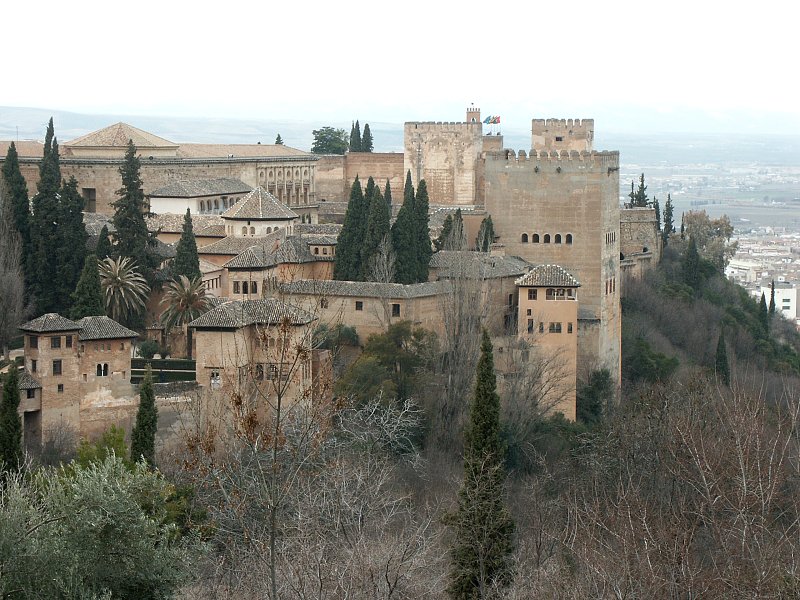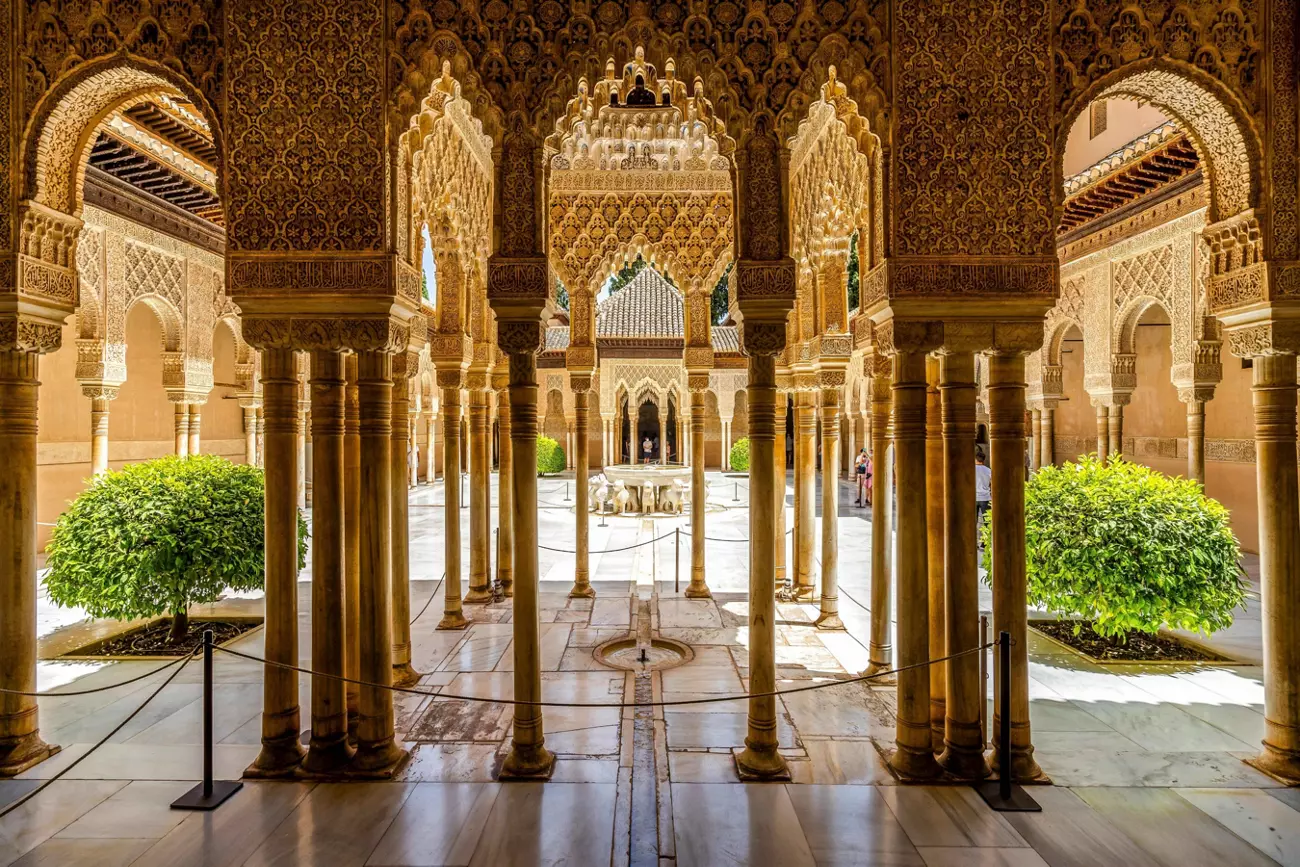Alhambra
The Alhambra, an exquisite example of Moorish architecture and a symbol of the rich cultural heritage of Spain, stands as one of the most renowned castles in Europe. Its name, “Alhambra,” is derived from the Arabic phrase “al-Qal’a al-hamra,” meaning “the red castle,” which refers to the reddish hue of its walls. This majestic fortress complex is perched atop the hill of al-Sabika overlooking the city of Granada. It has captivated visitors for centuries with its intricate art, sprawling gardens, and historical significance.
Can’t wait to visit the castle? Book your Alhambra tour online.
Location of the Alhambra
Situated in the southern region of Spain, the Alhambra is located in the autonomous community of Andalusia, specifically in the province of Granada. The castle complex occupies a strategic position on the Sabika Hill, which is part of the Sierra Nevada mountain range. This elevation provides stunning panoramic views of Granada and the surrounding landscapes. Additionally, the geographical coordinates of the Alhambra are approximately 37.176 degrees latitude and -3.589 degrees longitude. Furthermore, the site is easily accessible from the city center of Granada, making it a popular destination for tourists and scholars alike.

History of the Alhambra
The history of the Alhambra is a tapestry woven with threads of various cultures, rulers, and epochs. Originally constructed as a small fortress in AD 889 on the remains of Roman fortifications. It was not until the mid-13th century that the Alhambra began to transform into the magnificent complex known today. This transformation occurred under the rule of Mohammed I ibn Nasr, the founder of the Nasrid dynasty. He established the Alhambra as the royal palace and seat of the Nasrid emirs.
Throughout the 14th century, successive Nasrid rulers, including Yusuf I and Mohammed V, expanded and embellished the Alhambra. This period saw the construction of iconic structures such as the Comares Palace, the Hall of the Ambassadors, and the stunning Court of the Lions. The intricate stucco work, tile mosaics, and muqarnas (ornamental vaulting) adorn these spaces. They exemplify the zenith of Islamic art and architecture in the Iberian Peninsula.
In 1492, the Alhambra witnessed a significant historical event: the surrender of Granada to the Catholic Monarchs, Ferdinand II of Aragon and Isabella I of Castile. Consequently, this event marked the culmination of the Reconquista, the Christian reconquest of the Iberian Peninsula from Muslim rule. Following the conquest, the Alhambra underwent further modifications. These included the addition of Renaissance elements introduced by Charles V. He commissioned the construction of the Palace of Charles V within the complex.

Current status
Today, the Alhambra stands as a UNESCO World Heritage Site and one of Spain’s most visited monuments. The preservation and restoration efforts undertaken over the centuries have ensured that the Alhambra remains a testament to the artistic and architectural achievements of the Nasrid dynasty. Visitors to the Alhambra can explore its various palaces, gardens, and towers. Each offers a glimpse into the splendor of the past.
The Nasrid rulers, renowned for their lush gardens, tranquil courtyards, and stunning water features, designed the Generalife, their summer palace and country estate. Additionally, the Alcazaba, the oldest part of the Alhambra, served as the military fortress. Moreover, it provides breathtaking views of Granada and the surrounding Sierra Nevada mountains. Furthermore, the Nasrid Palaces, including the aforementioned Comares Palace and the Palace of the Lions, continue to awe visitors with their intricate decorative elements and historical significance.
In addition to its architectural marvels, the Alhambra houses a museum. This museum exhibits a collection of artifacts from the Nasrid period. This offers deeper insights into the cultural and historical context of the site. Furthermore, ongoing archaeological research and conservation projects aim to uncover and preserve the hidden treasures of the Alhambra for future generations.
Visitors are encouraged to purchase tickets in advance, as the Alhambra’s popularity often results in high demand and limited availability. Guided tours are available, providing expert knowledge and context to enhance the visitor experience. The Alhambra is not only a monument of historical and cultural importance. It is also a living testament to the enduring legacy of the civilizations that once flourished in Spain.
Admission
Community features
Castle features
Video
Location
Official website
Featured listings














